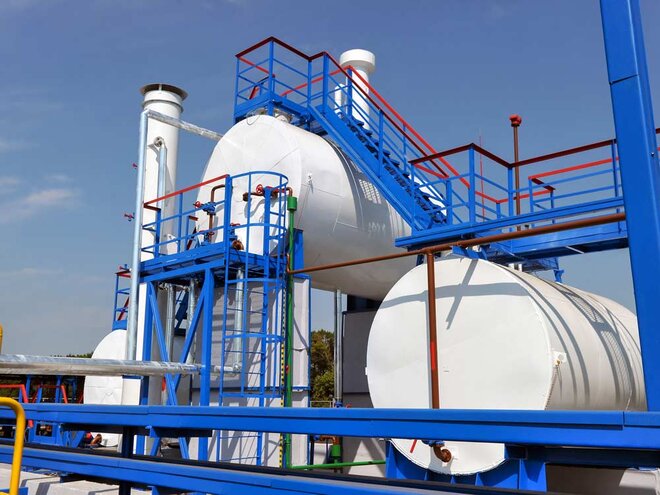
India's economic growth is interlinked with its energy demand. The third largest consumer of energy in the world, the country's energy demand is expected to reach 1,516 Mtoe by 2035 from 753.7 Mtoe in 2017. To meet this growing demand, natural gas has emerged as an important alternative energy source, since it is more economical and environment friendly. In India, natural gas is used in the manufacturing of fertilisers, plastics and various organic chemicals. Also, it is used as a fuel for generating electricity in various industrial units, as piped natural gas (PNG) for cooking and as compressed natural gas (CNG) for automobiles.
The availability of natural gas extracted in India falls short of meeting the growing demand for this alternative energy source. Hence, the country banks on importing gas in the form LNG (liquified natural gas). Since it is difficult and costly to import natural gas, it is, therefore, converted into the liquid form, imported and then regasified. As compared to the gas form, the liquid form takes 1/600th space.
While domestic gas accounts for just 52 per cent of the total gas consumed in India, the remaining comes from imported LNG. In India, upstream companies like ONGC and Oil India are involved in extracting gas. The prices of the domestically produced gas are regulated by the Indian Government through the process called Administered Pricing Mechanism (APM). Based on four international benchmarks, APM is revised after every six months.
The last gas price revision came into effect from October 1, 2020, with the price being revised to $1.79 metric million British thermal unit (mmBtu) from $2.39. This revision will impact the prices of domestically produced gas. The price of RLNG (regasified LNG), however, will remain unaffected, as it is mostly based on (one to one) long-term contracts. At present, as compared to the price of domestic gas, the price of RLNG is higher around $8-9 per mmBtu. This is because the long-term contracts were signed several years ago when the price was on a higher side.
Key beneficiaries
With the latest price revision, the price gap between domestically produced gas and RLNG has widened further and domestic gas has become much cheaper. As mandated by the government, priority sectors, CNG and PNG, will be given priority for the supply of cheaper domestic gas. Therefore, users of CNG and PNG, along with gas-marketing companies like IGL, Mahanagar Gas, Gujarat Gas and Gail Gas, will get the benefit of the revised prices. On the other hand, fertiliser companies - who get around 40 per cent of the total gas supply from domestic sources - will see partial savings. Besides, power companies, who get around two-thirds of their gas supply from domestic sources, will also be the beneficiary of the revised prices. However, only 6.7 per cent of power-generating companies use gas as a source of electricity. When it comes to other industries, domestically produced gas accounts for one-third of their requirements. Hence, their savings following the price revision will be very limited.
GAIL and GSPL - which transport gas through their pipeline - may see a slight improvement in their capacity utilisation, as customers use more gas. GAIL, which also markets the majority of gas in India, is able to pass on the prices to customers while maintaining its margin on the trade. However, since it has a stake in the gas-marketing companies like IGL, Mahanagar Gas and GAIL Gas, it will be benefitted at the consolidated level.
Largely neutral
Petronet LNG, Shell and IndianOil - involved in importing LNG and regasifying it - will not see any impact on their profitability, as they have long-term contracts in place and make money from regasification charges. However, a wide gap between spot prices and long-term contracts will act as a deterrent for any new contracts or renewals. The market leader, Petronet, is talking to major suppliers like RasGas in Qatar to re-negotiate these long-term contracted prices. If done, it will further boost customers who use RLNG sources.
Negatively impacted
Upstream companies (who extract gases) like ONGC and Oil India - which were struggling with the older prices - will further go deeper into the red as their realisation from selling natural gas will go down by 25 per cent with the latest price revision.
To sum up
Lower domestic gas prices, which have come at the cost of the upstream companies, should help in building a strong market towards a more gas-based economy. India looks at increasing its energy share from gas to 15 per cent from around 7 per cent in the next one decade. Further, this move is also in line with the environmental commitment made by the country in the Paris climate accord. However, the renegotiation of long-term contracts for imported LNG is an important aspect in this regard, as its contribution continues to increase amid the limited domestic supply.








